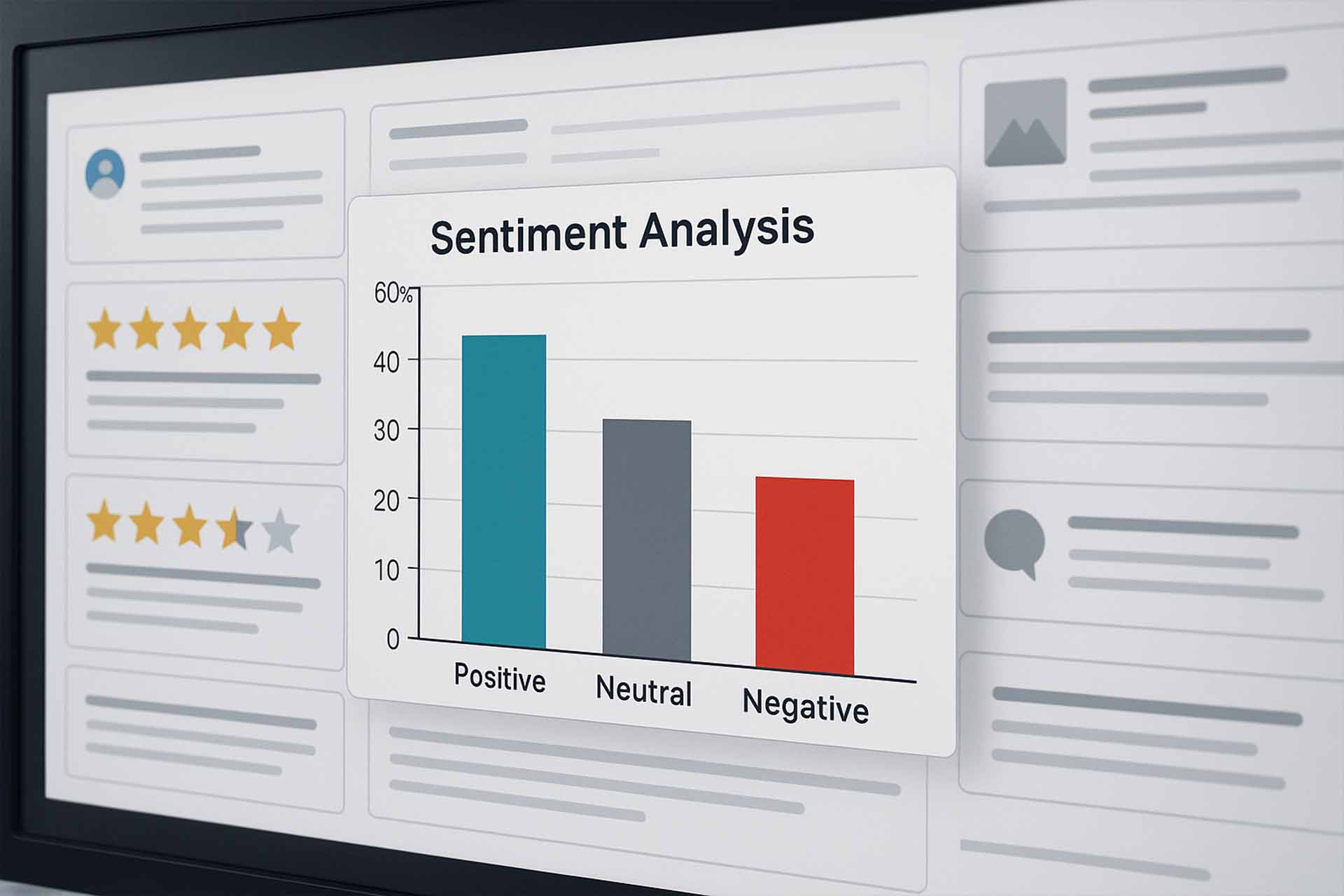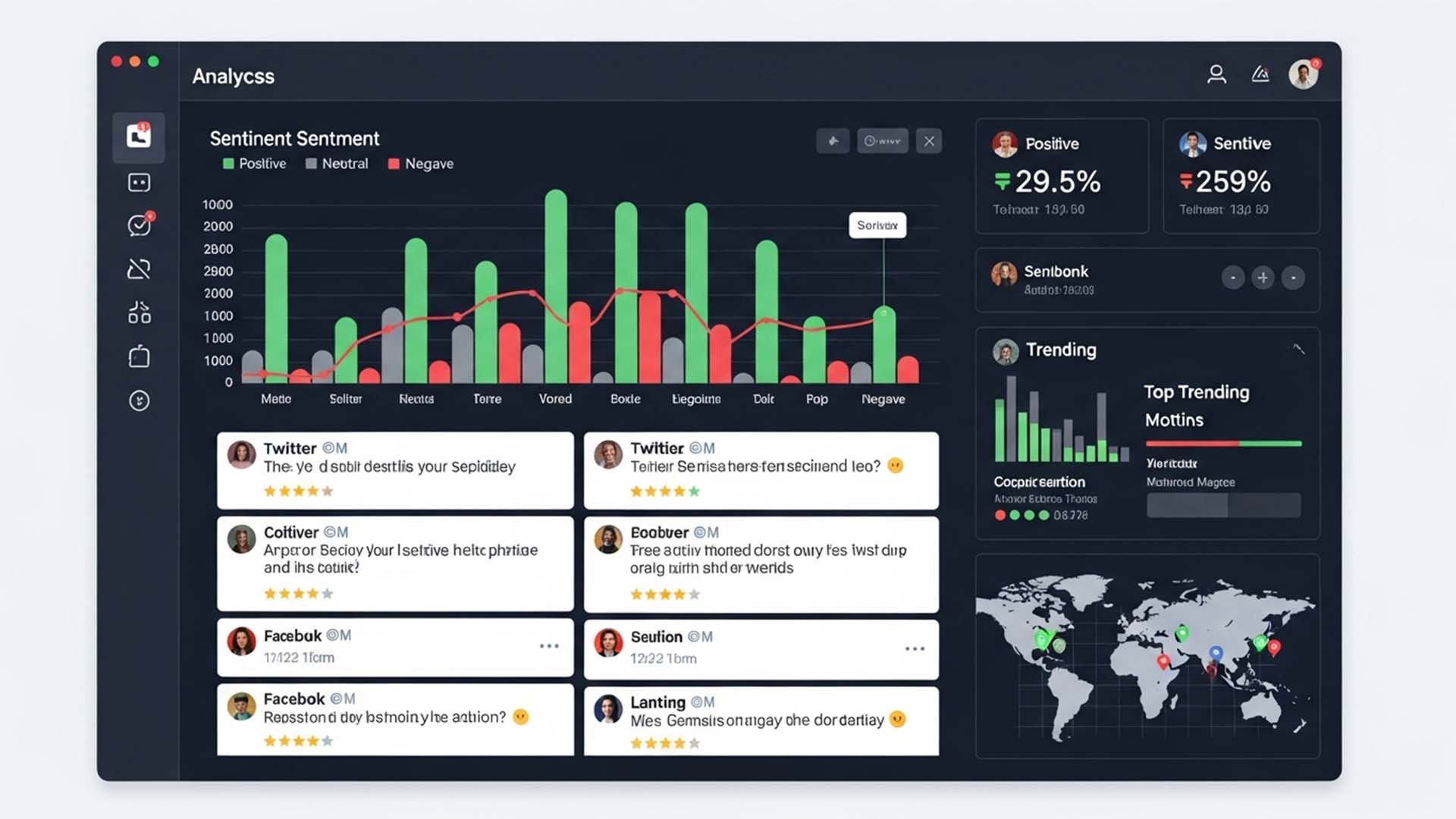
Sentiment Analysis: Decode What People Feel—and Act on It
Sentiment Analysis lets you move beyond “what was said” to “how people felt” and why. With NLP and machine learning, you’ll classify text by polarity, intensity, and emotion to guide smarter marketing, product, and support decisions.
What Sentiment Analysis Does
- Polarity: positive / negative / neutral
- Intensity: strength of feeling
- Emotion type: joy, anger, sadness, frustration, trust
Where to Gather the Right Data
- Social platforms: posts, comments, mentions for social listening
- Reviews: app/store reviews to surface strengths and friction points
- Support logs: chats, emails, call transcripts to locate recurring pain
- Surveys: open-ended answers to explain satisfaction scores
High-Impact Use Cases
Reputation & Crisis Detection
Use sentiment spikes as early-warning signals. Advanced models also catch sarcasm that keyword lists miss.
Product & CX Improvements
Cluster negative reviews by topic (battery, shipping, UX) to set development priorities. Route high-negativity tickets to senior agents.
Emotion-Driven Marketing & Content
Track sentiment before/during/after campaigns. If reactions are neutral while your goal is excitement, iterate the message fast. Benchmark competitor sentiment: if price drives negativity there, double-down on value and quality positioning.
Common Challenges—and Fixes
- Sarcasm & humor: use domain-tuned deep learning models.
- Dialect & multilingual text: choose tools trained on your audience’s languages and context, not keywords alone.
- Messy data: clean typos, symbols, and duplicates before modeling.
KPIs We Recommend at Loop Media
Positive sentiment lift, time-to-respond on high-negativity tickets, CTR uplift on emotion-aligned creatives, and churn/cancellation reduction after sentiment-led fixes.
Pitfalls to Avoid
Over-reliance on dictionaries, analyzing channels in silos, and reading weekly percentages without time/event context.
Loop Media Takeaway
With Sentiment Analysis, you’ll ground decisions in real audience feelings. Loop Media can blueprint a full workflow—social listening, modeling, and decisioning—tailored to your brand.
FAQ
What is Sentiment Analysis?
An NLP technique that classifies text by polarity, intensity, and emotion to reveal audience attitudes.
How does it help marketing?
It refines messaging, targets offers, and tracks campaign impact in real time.
Can it handle Arabic dialects?
Yes—with context-aware models trained on relevant Arabic data.
How do I measure success?
Track positive-sentiment lift, response time, CTR, and retention metrics.
What about sarcasm?
Use advanced, domain-tuned deep learning models that understand context.
 العربية
العربية



